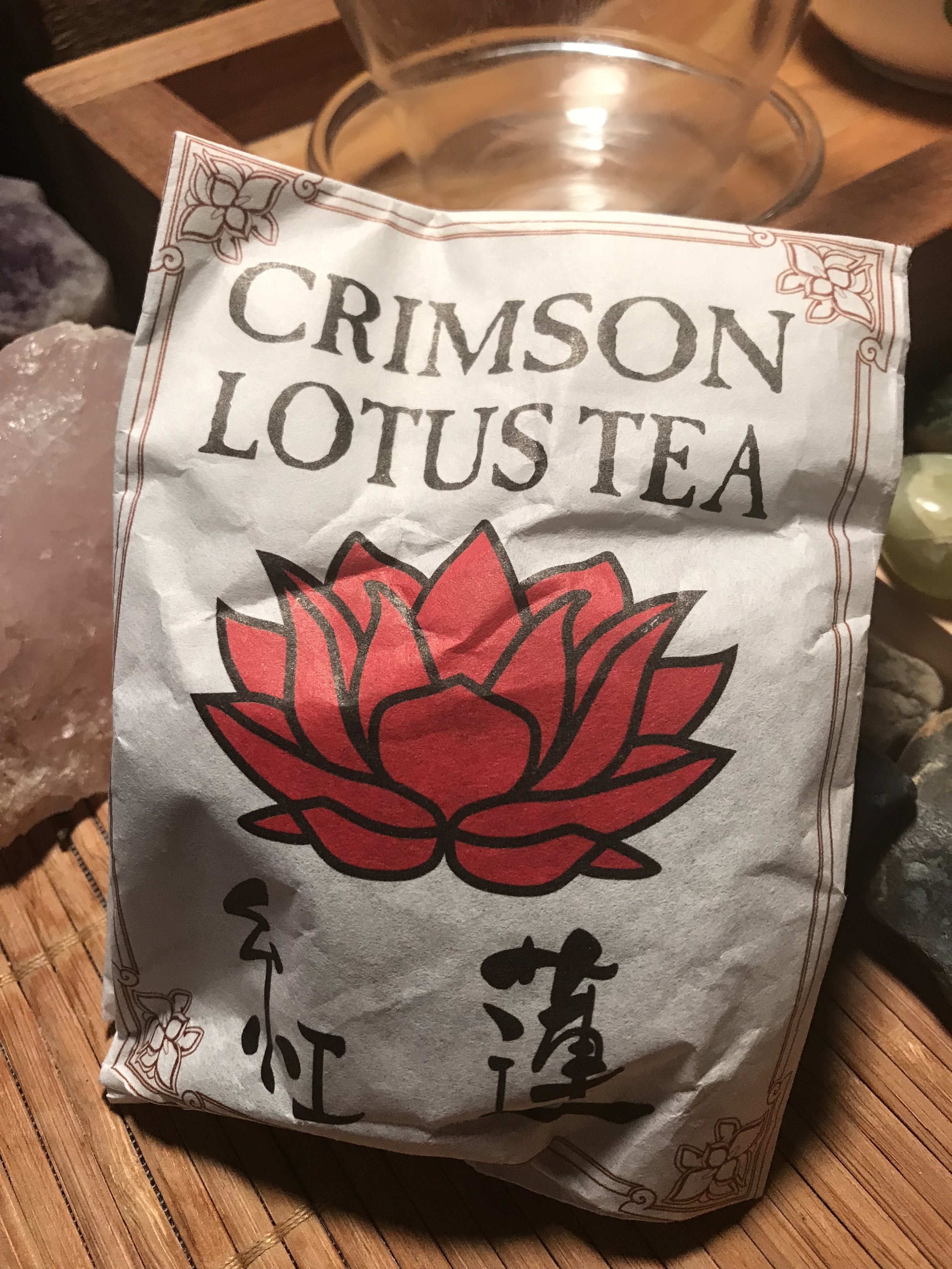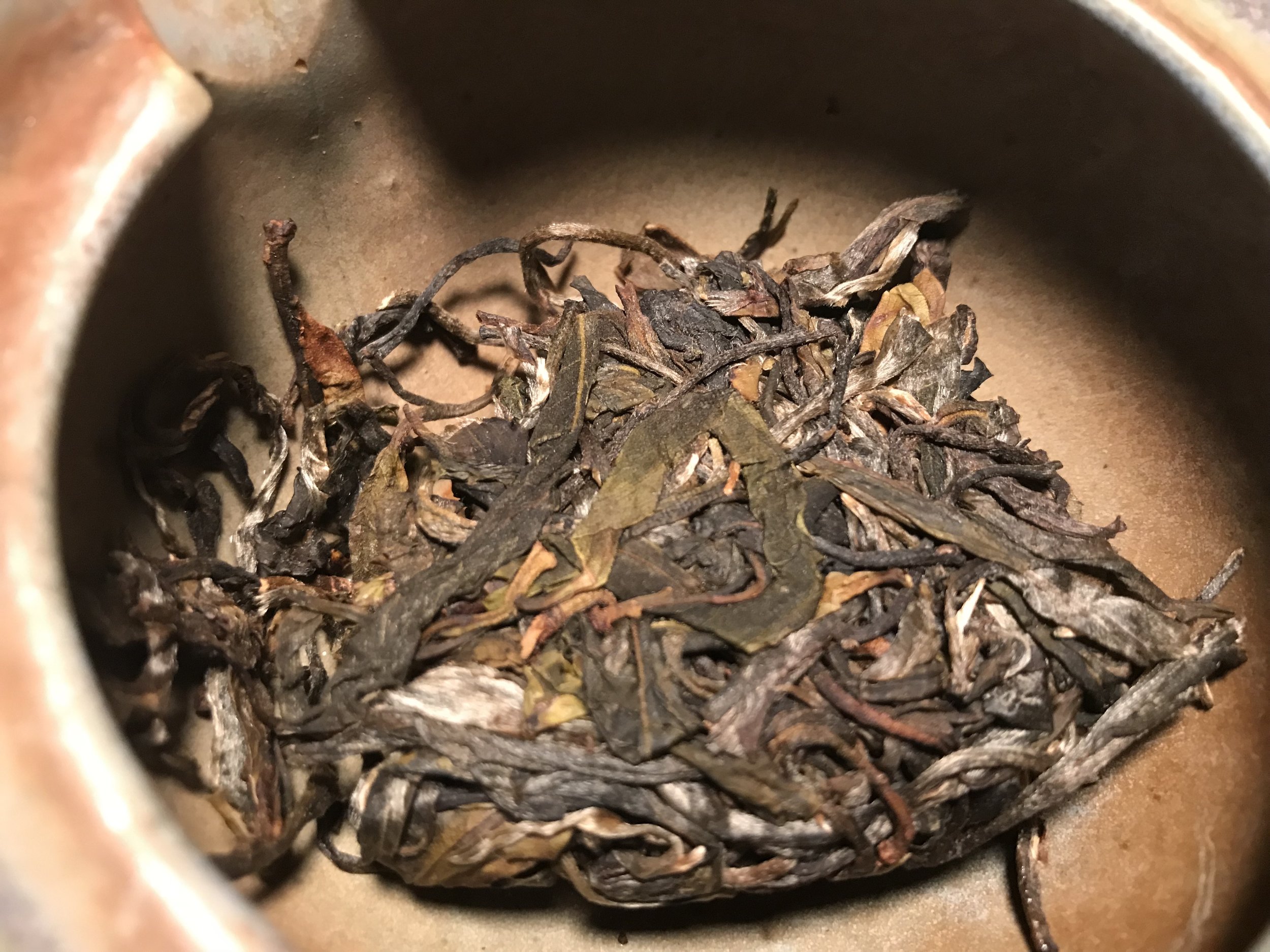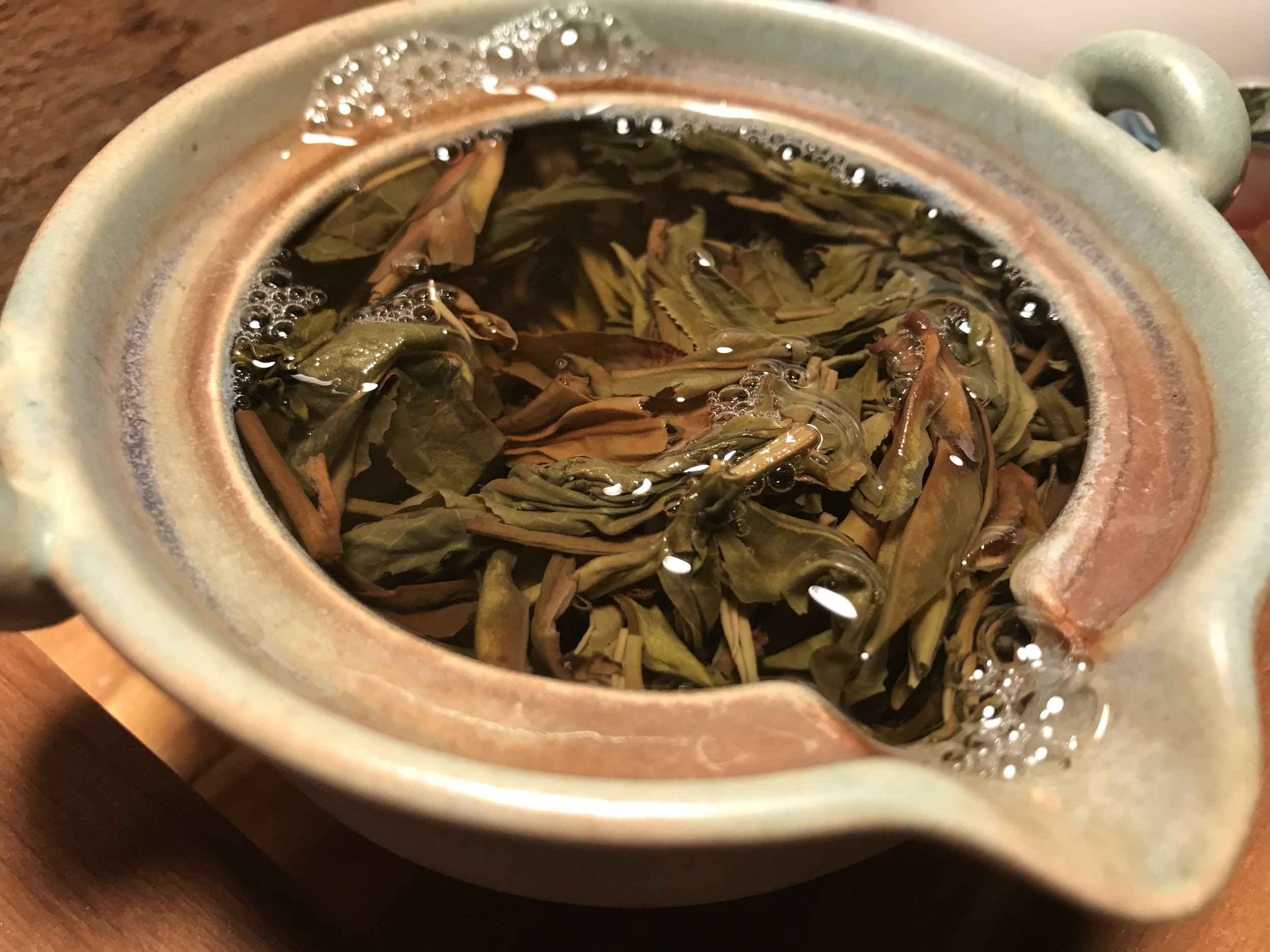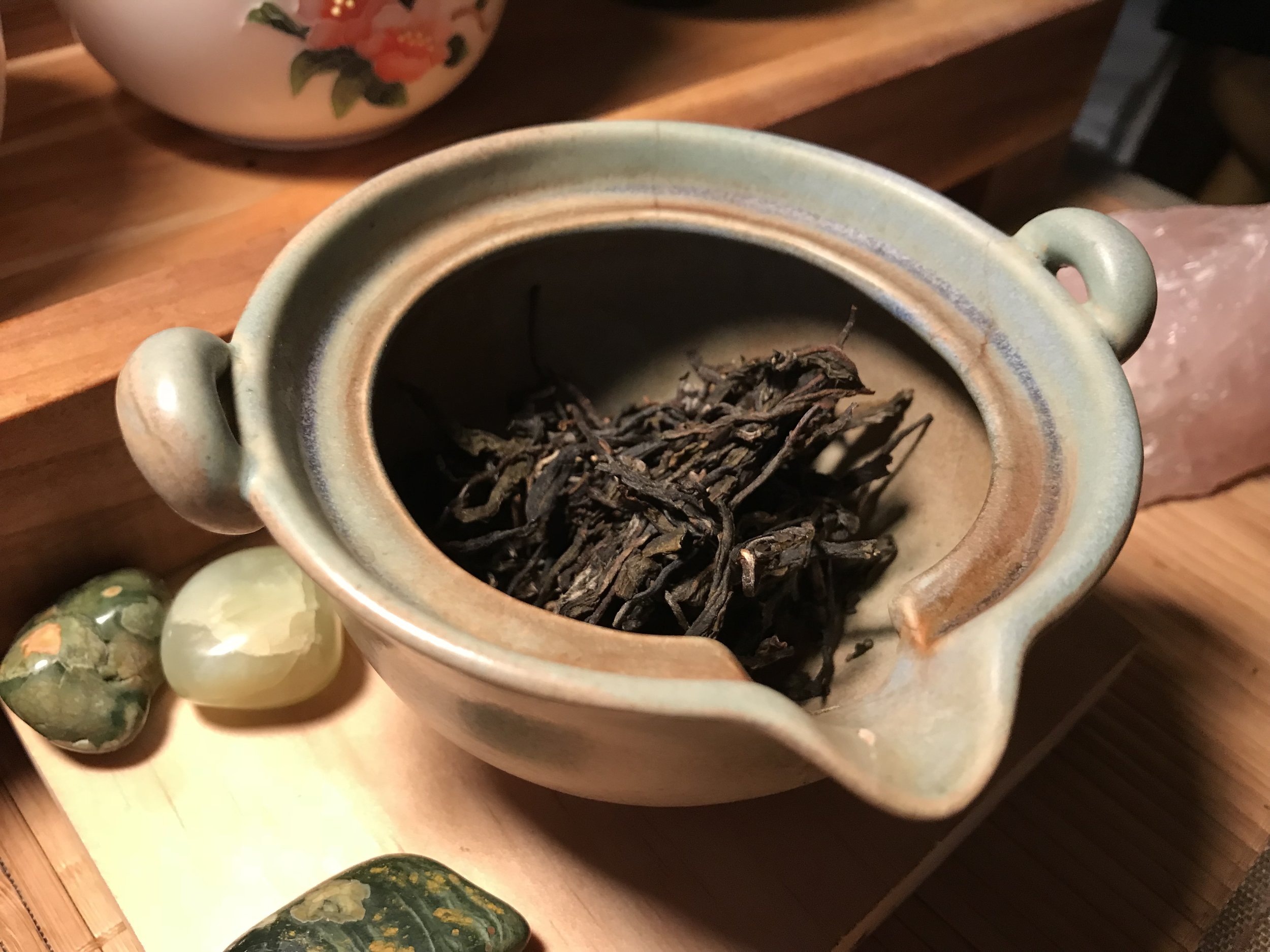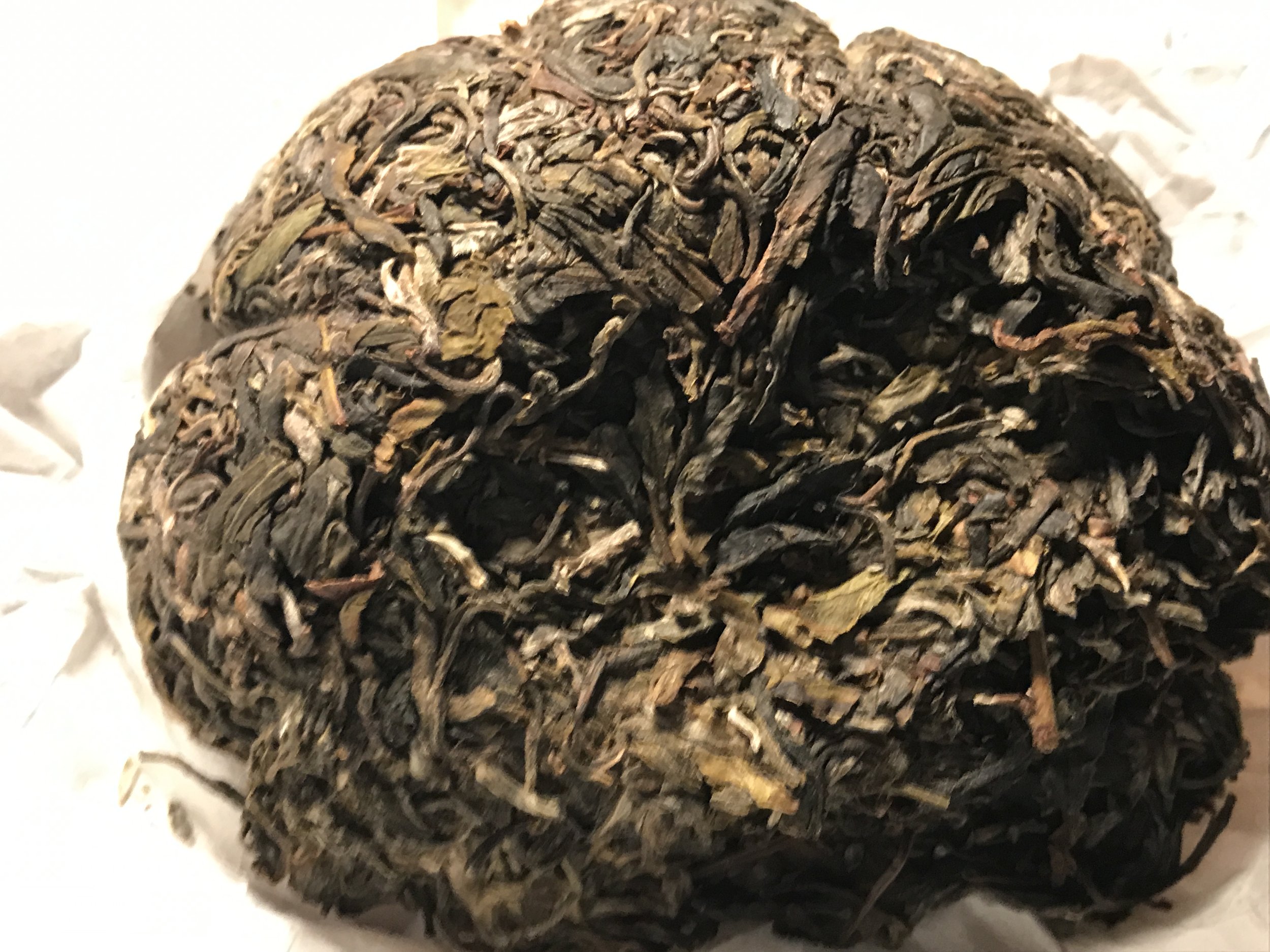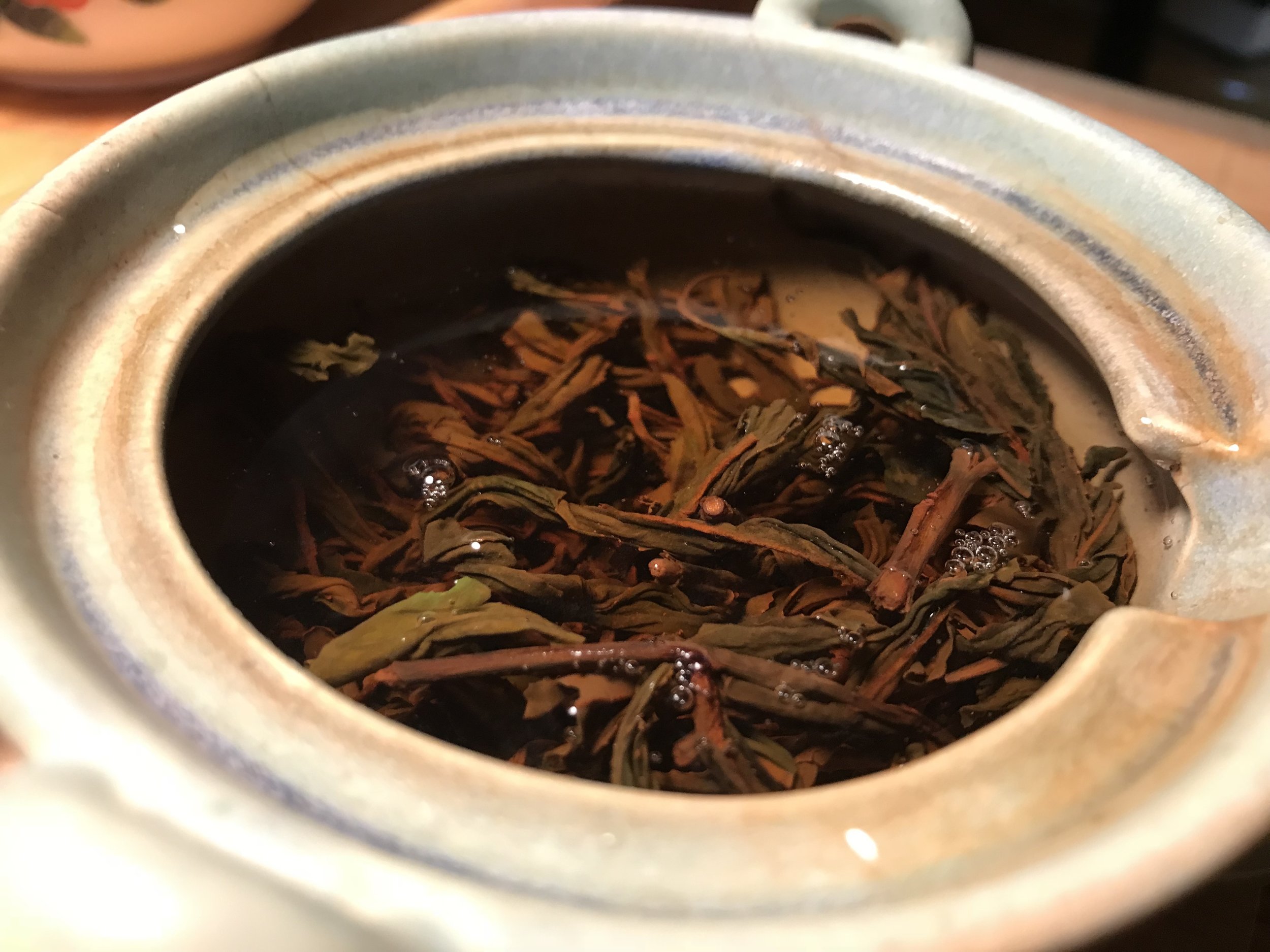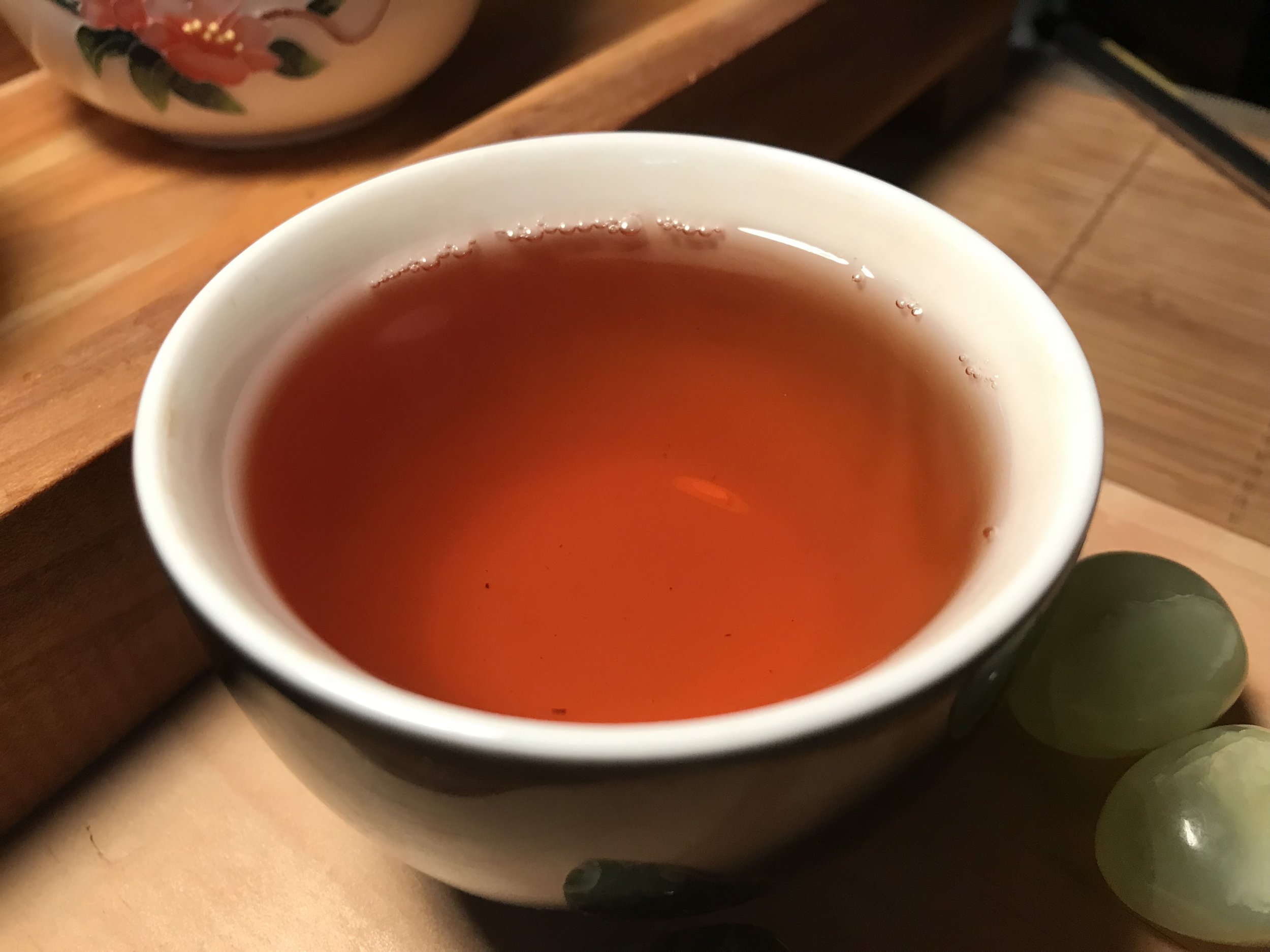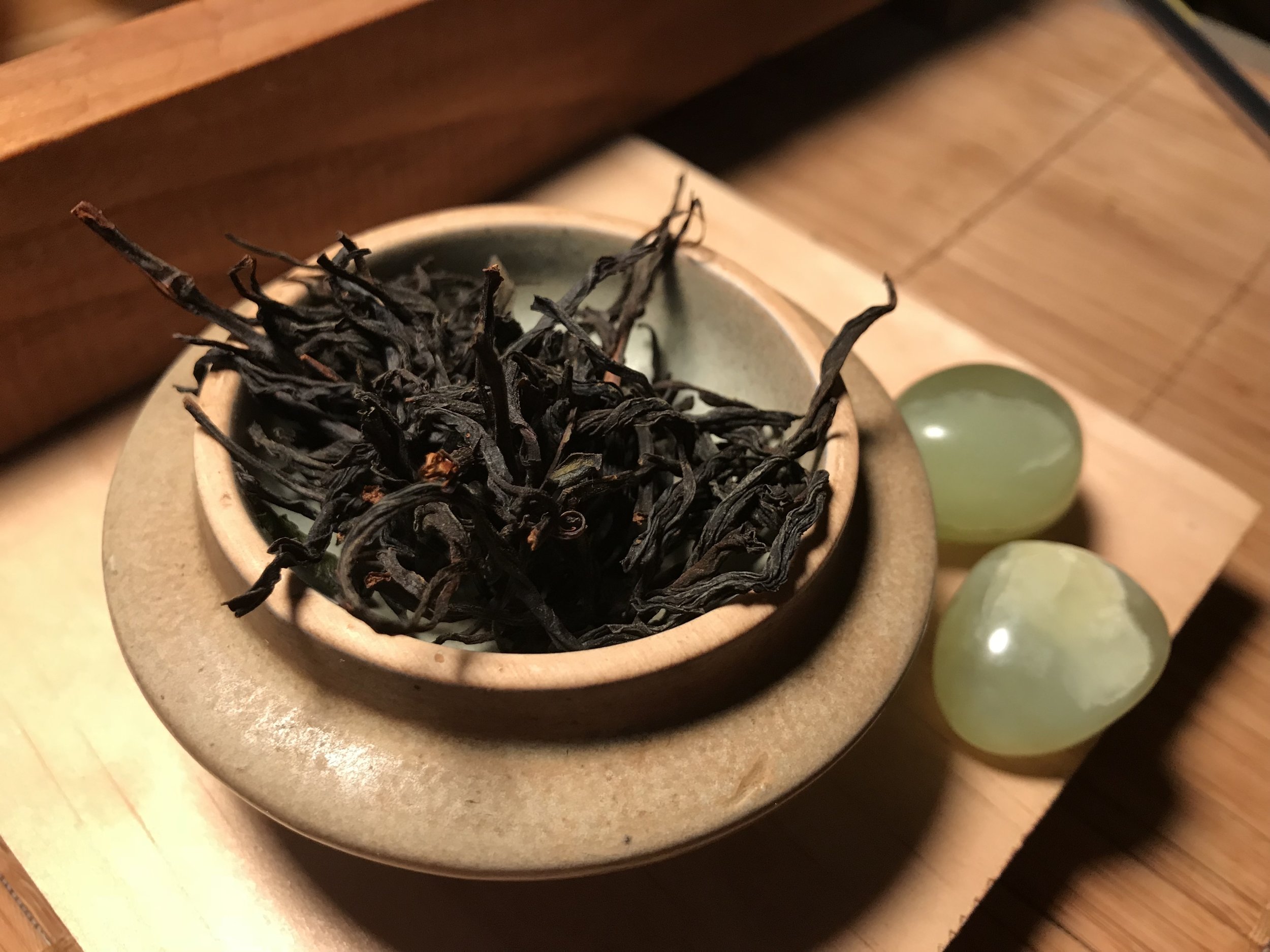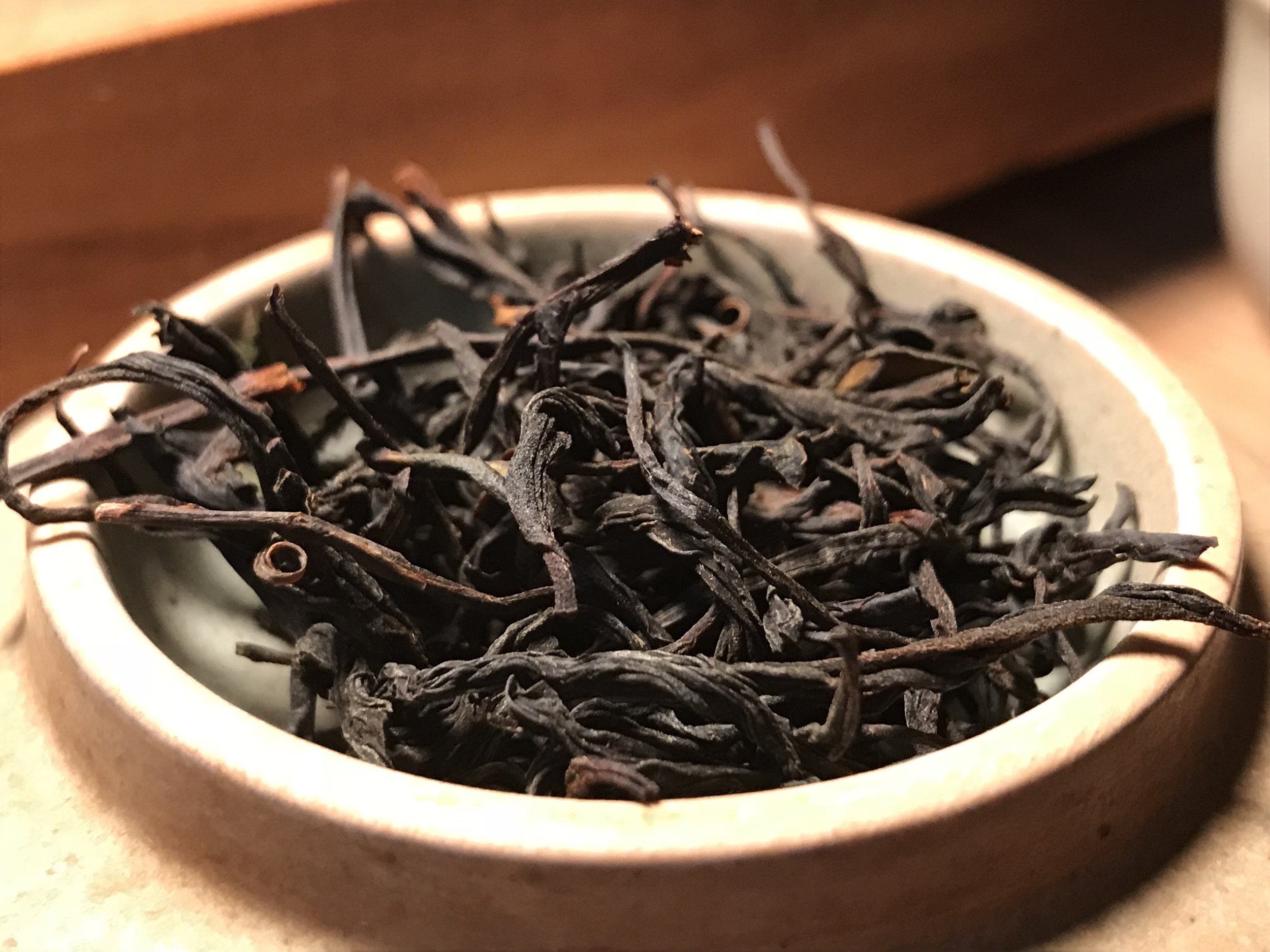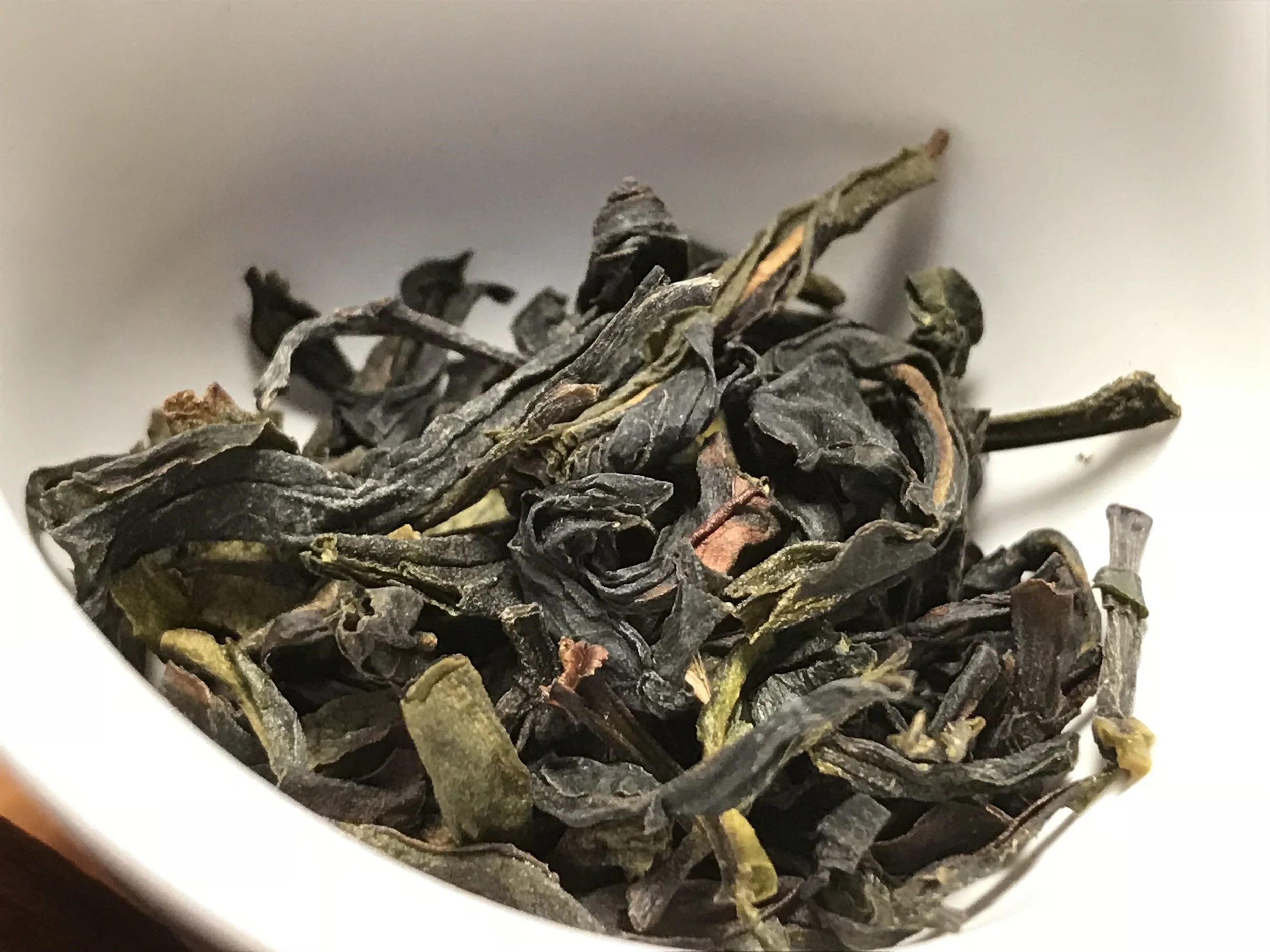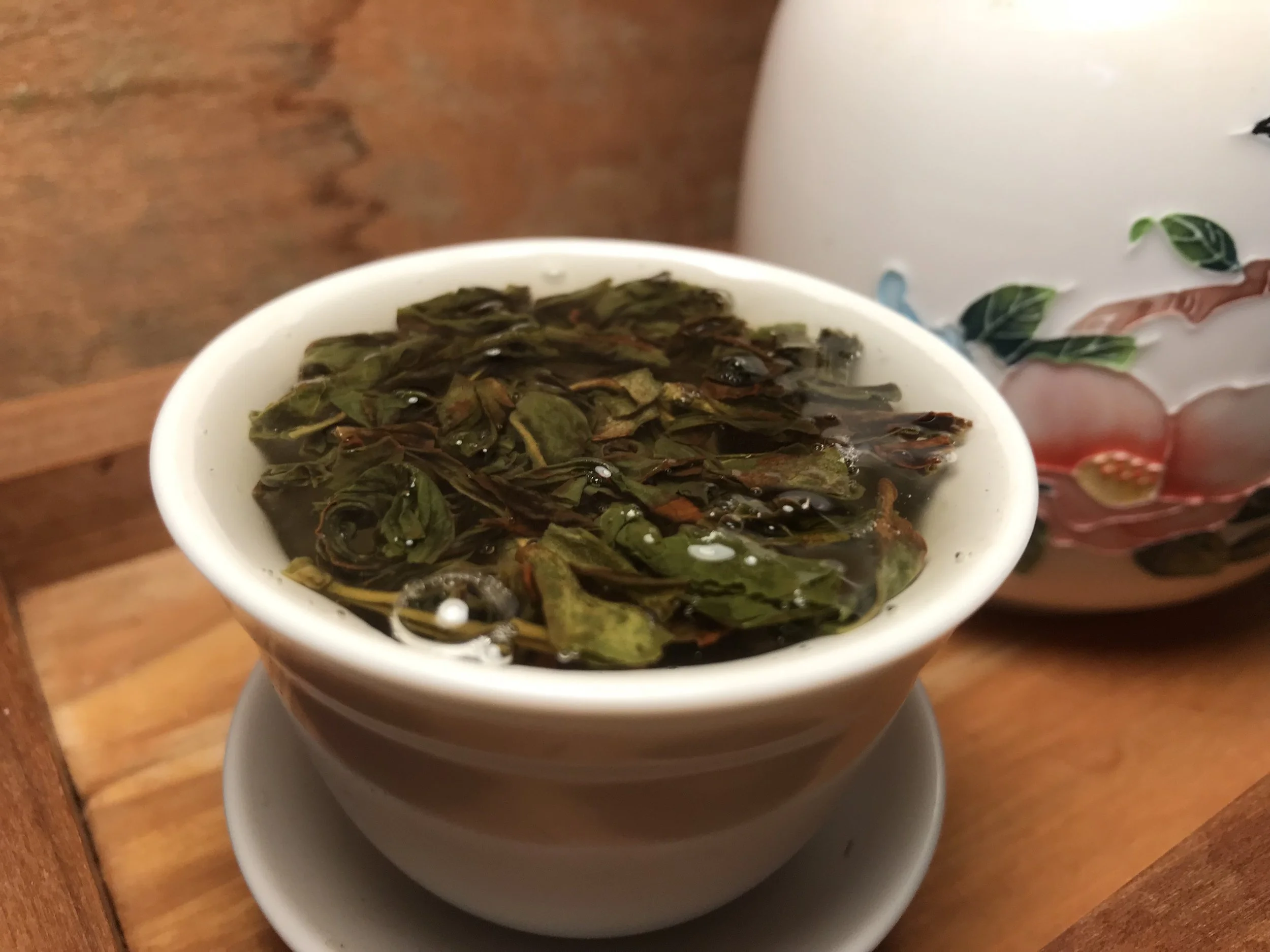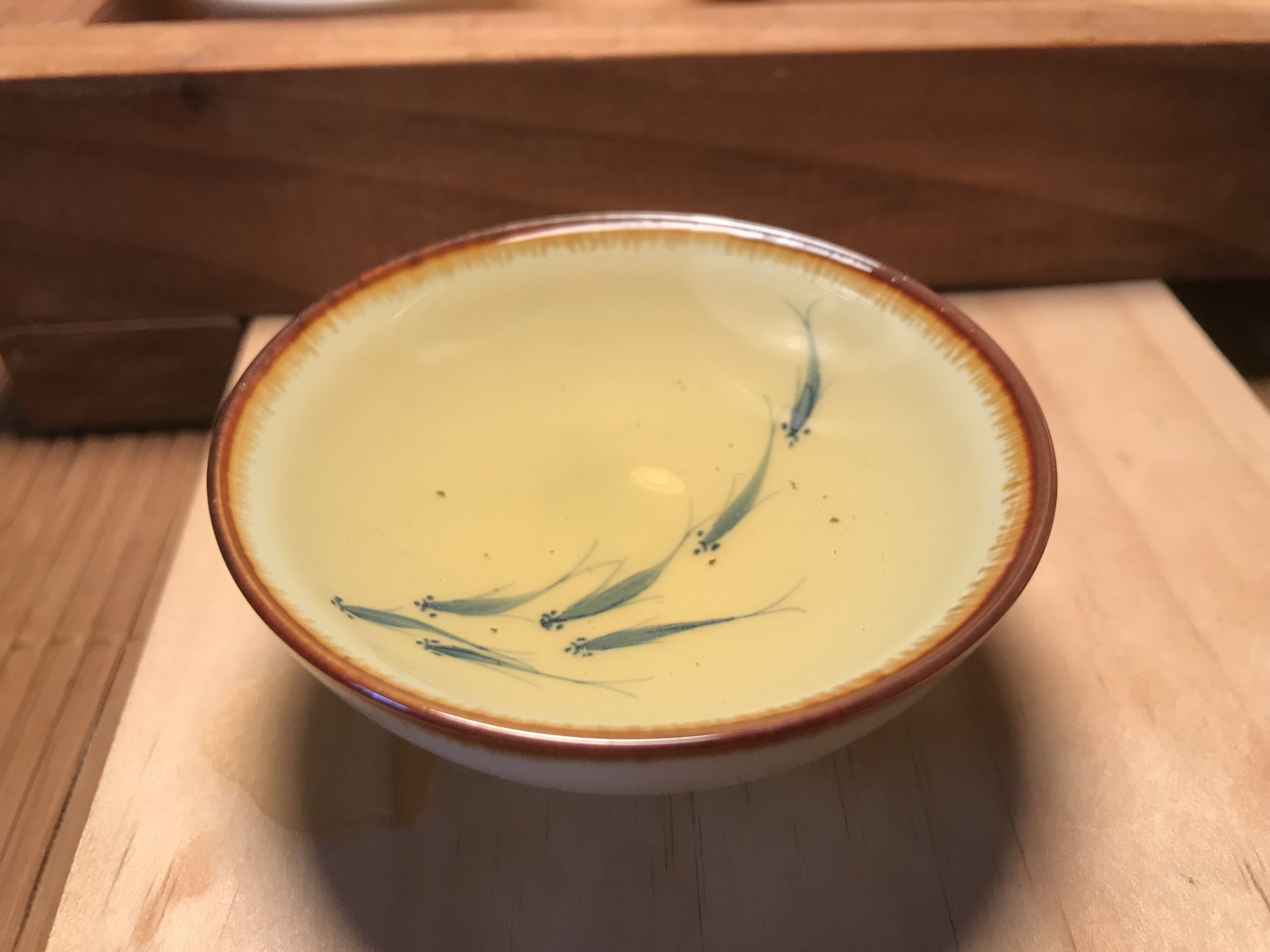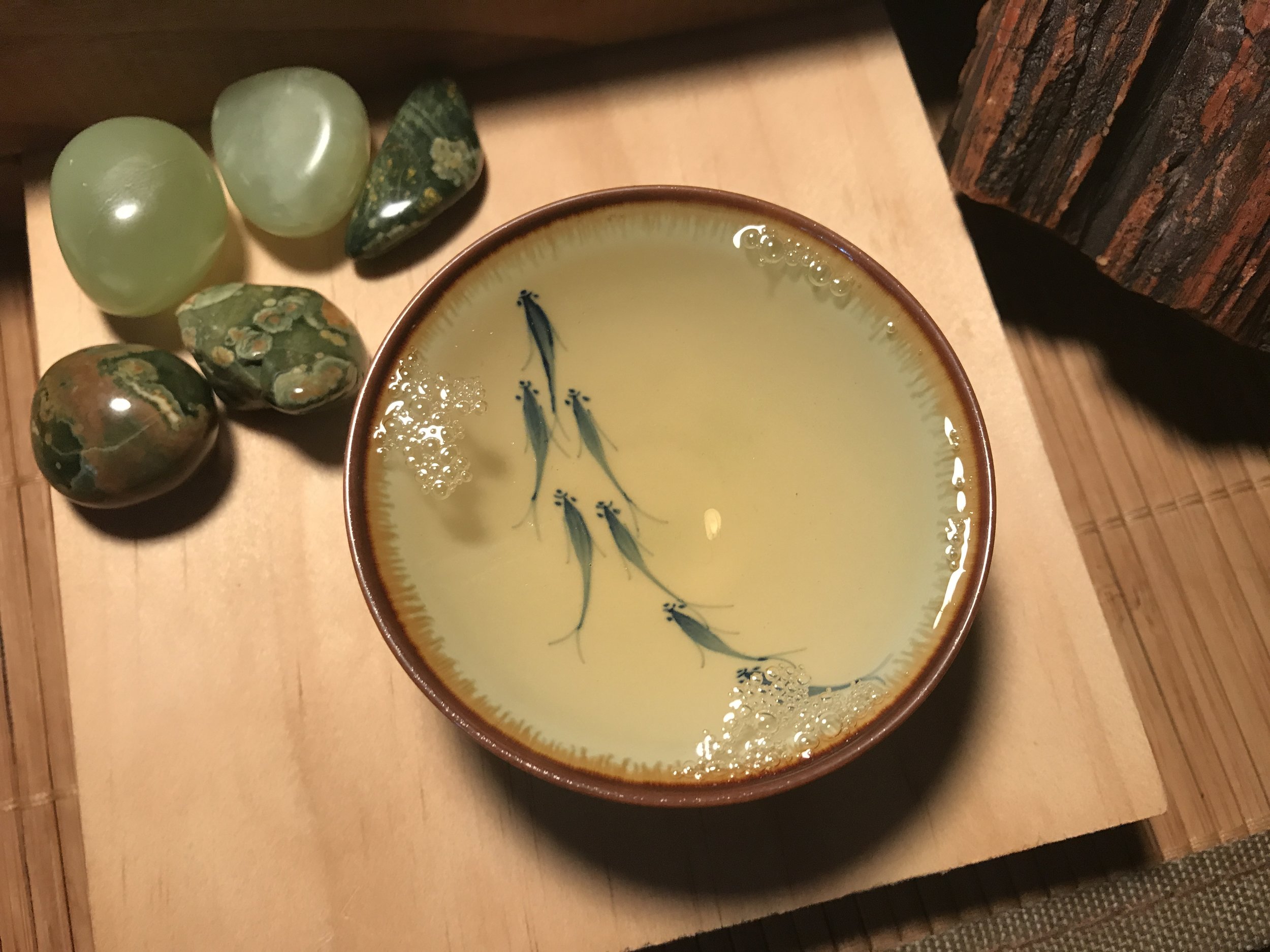Tea Sessions #8 Jade Rabbit Raw Pu'er from Crimson Lotus Tea.
I have been following Crimson Lotus tea on social media for some time now. I really enjoy watching Glen & Lamu’s videos as I like to know more about the tea I am drinking. I also love how passionate they are about Pu’er tea, I can tell it is a passion and a craft they have really cultivated. This is the first tea that I have had from Crimson Lotus. I ordered a 20g sample of Jade Rabbit.
Aroma:
Dry: This is one of those teas that by just smelling the dry leaf I know it’s going to be good. As I open the sample package and inhale I become aware of the classic smokiness that one gets with raw pu’er along with a little bit of spiciness. Just with a whiff of the dry leaf there is qi stimulation into the head as usual and a strong qi sensation at the Yuzhen energy center at the occiput.
Wet: As always with raw pu’er, I love the aroma after the initial wash. The word that describes the aroma of this tea is awakening. It’s aroma is complex and energizing, with a lot of qi stimulation. I experience the usual smokiness but what sticks out the most is an incredible thick, apricot-citrusy sweetness. I initially experience qi stimulation up into the skull, Yuzhen point(at occiput) and a quick burst of energy from The Yuzhen point to the Yin Tang point in between the eyebrows. After the initial upward burst of energy I experience tingling and qi sensation moving back from my tongue, moving strongly down through the throat and into the heart area. This is just from the aroma..
Color
The brewed color is a nice deep amber.
Taste
1st brew ( 200 Degrees, 10 seconds)
As the aroma is complex so is the taste. As I take the first sip, the first thing that comes to mind is the thickness of the tea soup. First I experience sweetness, a citrusy-apricot flavor, a pleasant smoky-bitter taste. At the end of the sip it all combines into one flavor and lingers nicely in the breath. As I prepare the 2nd brew the taste still lingers and shifts from moment to moment. A few seconds sweet, another few bitter and another citrusy-apricot. As I take a few sips I notice the qi rush upwards into the skull, the upper dantian area, and a quick stimulation following the midline of the head from the Yin Tang point to Yuzhen at the base of the occiput. Directly after this sensation, and as the bitterness kicks in, the qi rushes down into the center chest, the middle dantian area. Like the aroma, the qi is thicker and sweeter than other pu’er teas I have talked about in Tea Sessions. The qi feels viscus and thick as it expands and slowly moves around the chest. It feels like honey, slowly swirling around in the chest. As with most tea, the qi eventually descends down through the belly and feet. If you can’t tell yet, I am really enjoying my experience with the Jade Rabbit.
2nd brew (200 Degrees, 15 seconds)
The 2nd brew is still thick, sweet & citrusy. Pleasant bitter tones begin to seep through that are surrounded by a sweetness. The qi stimulation is the same as the first brew but as the extra bitter flavors kick in, the qi stimulation vibrates more through the throat. As before there is a thick qi that circulates in the chest that eventually descends.
3rd brew & beyond (200 Degrees, 15 -25 seconds)
The Jade Rabbit can go for many, many steeps. I am finishing the 5th brew now and preparing the 6th. The flavor is still complex and alternates between citrusy, smoky & and bitter, always with a thick sweetness. The qi stimulation is consistent as well
My thoughts
This tea is expertly and artfully crafted. The Jade Rabbit isn’t just thrown together, it has been mindfully crafted for a specific experience. The complexity of aroma and flavor in this tea is amazing and totally unique. Through each brew there is a thick sweetness that is accompanied by an alternating apricot-citrus flavor, smokiness or a pleasant bitterness. The mixture of flavors in this tea are like sections or progressions in a piece of music. With each sip I experience tension & release, bitter & sweet. The sweetness is the motif that is developed by the other flavors. It is really a pleasure to experience something so well put together.
As a Chinese Medicine & Qigong practitioner, part of my experience of drinking tea is noting each tea's energetic properties and stimulation of qi. To achieve this expanded perception, I do a quick meditation that relaxes the body and expands my awareness. This allows for my perceptual awareness to be more sensitive.
Here are my notes about qi stimulation while drinking the Jade Rabbit:
As with most pu’er, I noticed the initial burst upwards of qi into the center of the skull, which is considered the upper danitan area in Chinese energetic physiology. The upper dantian is located in the skull and can be thought of as the house of spiritual intuition, perception and awareness. It is interesting that I noticed qi stimulation not only in the center of the upper dantian but in the energy points that surround it. I felt a shock of qi rush from the yin tang point, between the eyebrows to the yuzhen point at the base the occiput. These points are also the front and back points of the 6th chakra gate, which is associated with Intellect & spiritual intuition. The upper dantian contains the 6th and 7th chakras gates. Most pu’er teas that I experience activate this center. What was unique about the Jade Rabbit was the shock of qi to the front and back gates and its descent into the chest.
After the initial burst of qi into the upper dantian area, I experienced a slow descent through the throat and into the chest. The chest is considered the middle dantian and generally is considered the seat of transforming mental and emotional energy. Unique to this tea, I felt a slow, thick & sweet energy moving in my chest that eventually descended. I have felt similar sensations with other raw pu’er but this unique in its thickness.
In my opinion this Jade Rabbit invigorates and awakens the intuitive and perceptive nature of the upper dantian while stirring and moving the mental / emotional energies of the middle dantian. It ends up descending down through the belly and legs.
For me the experience of drinking this tea was invigorating to the senses yet so calming and introspective in nature. Because its energetic properties simulate the intuitive & mental emotional energies, this is a great to drink while doing spiritual work & self cultivation.
I am really looking forward to trying other tea’s from Crimson Lotus!

